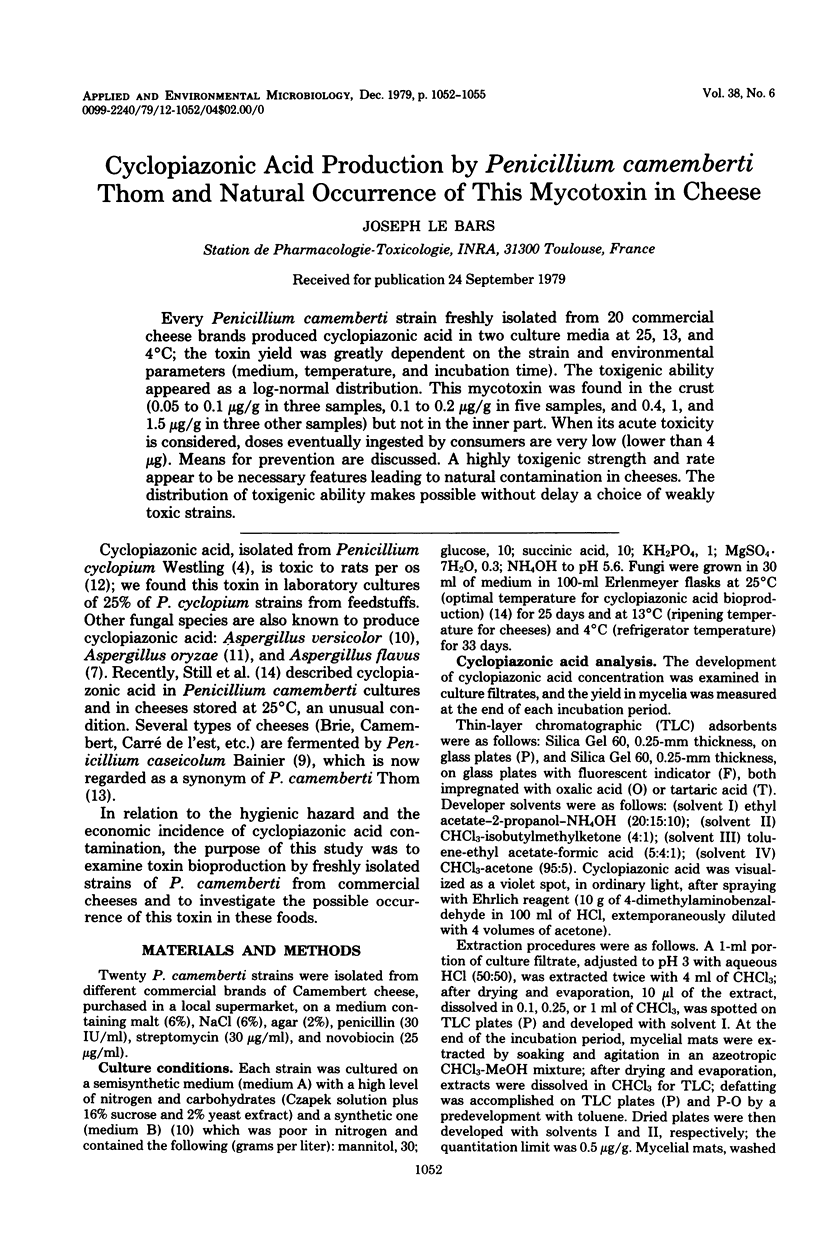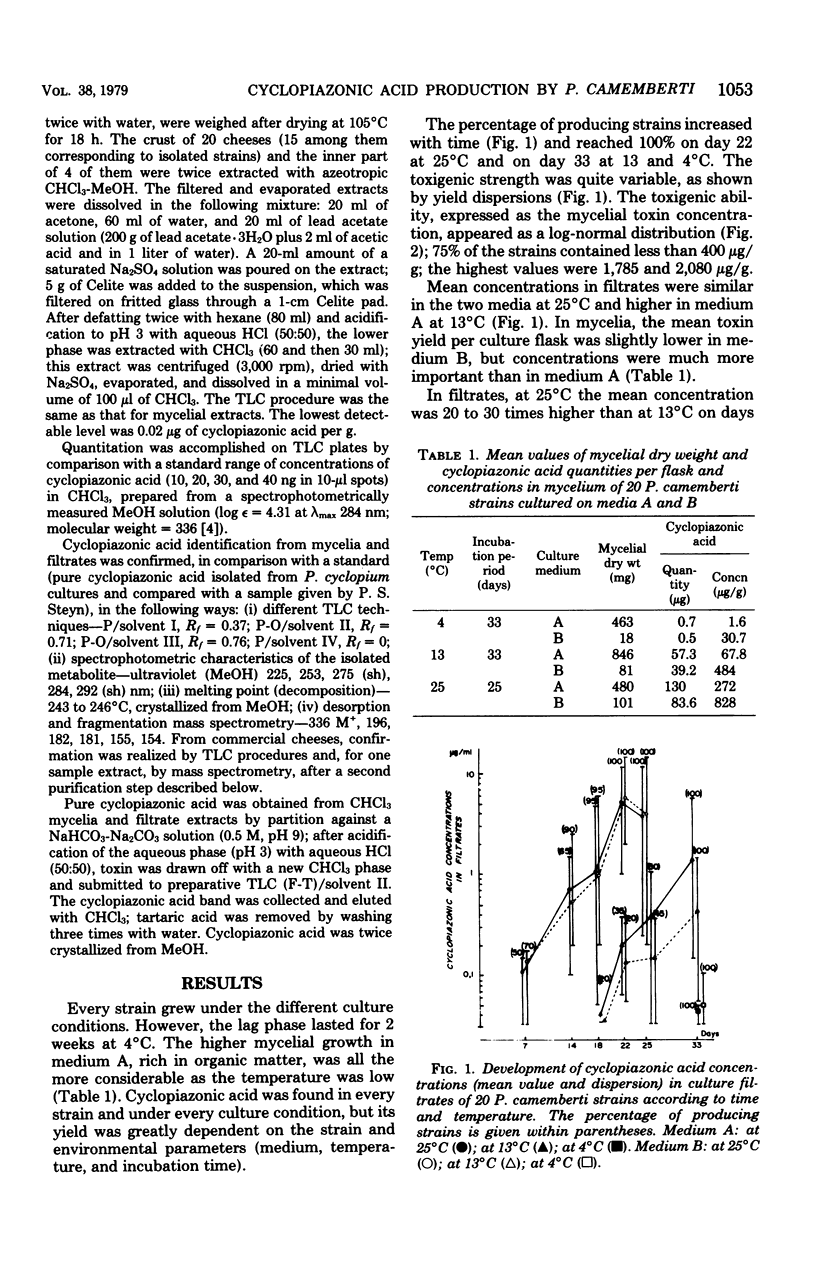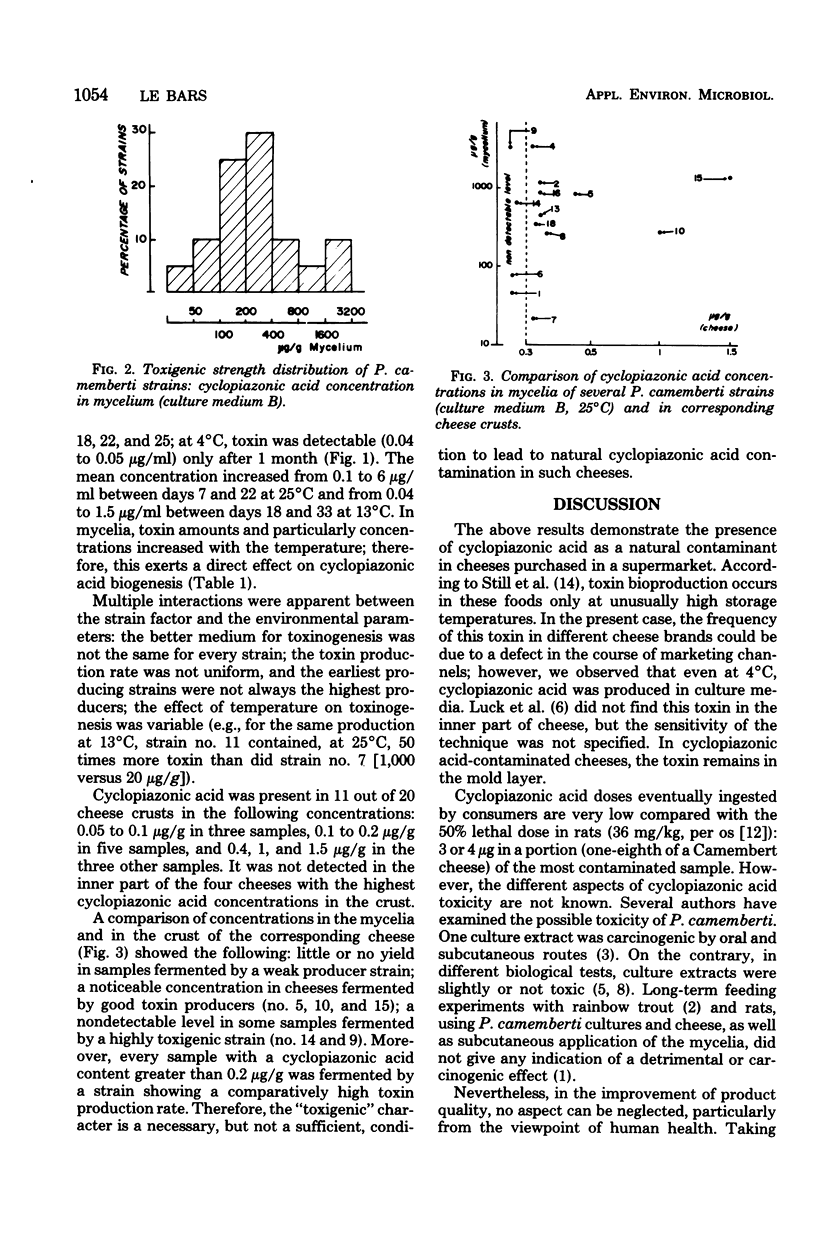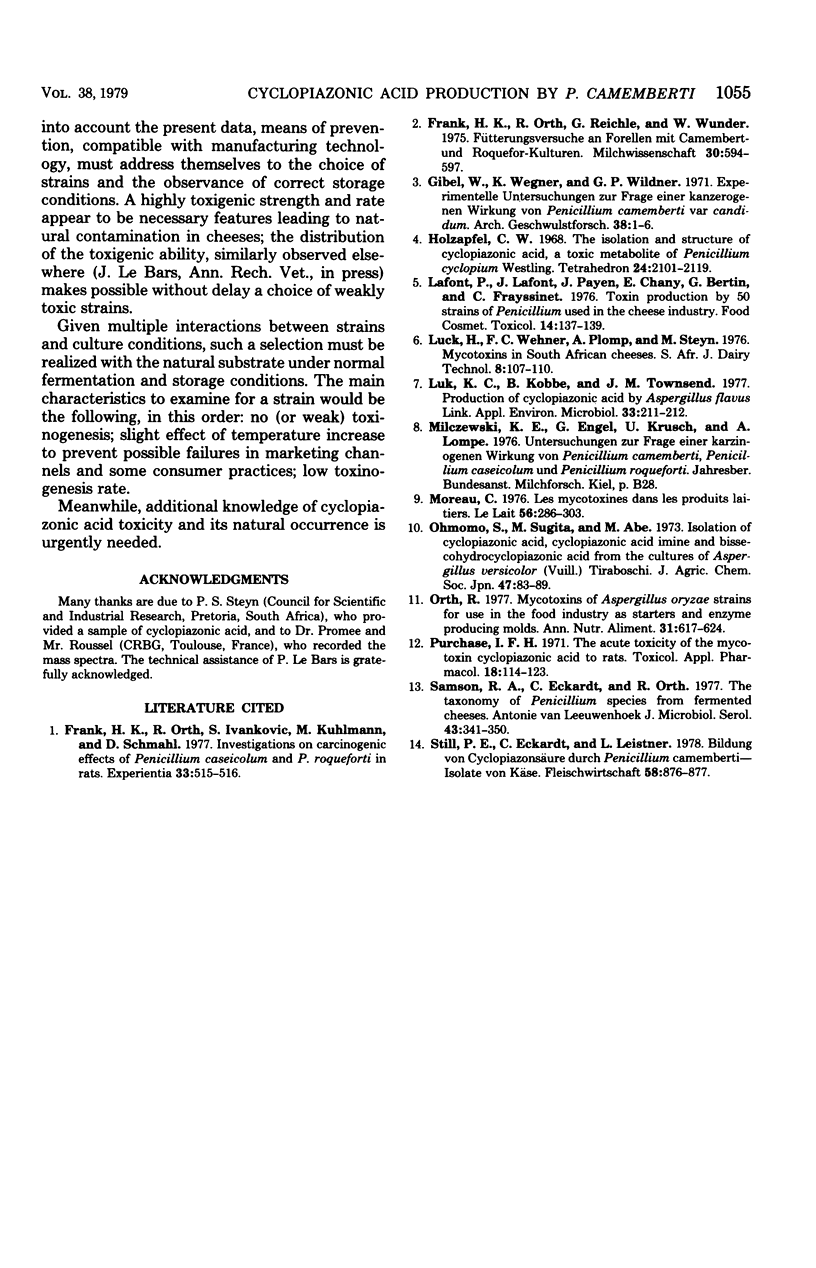Abstract
Every Penicillium camemberti strain freshly isolated from 20 commercial cheese brands produced cyclopiazonic acid in two culture media at 25, 13, and 4 degrees C; the toxin yield was greatly dependent on the strain and environmental parameters (medium, temperature, and incubation time). The toxigenic ability appeared as a log-normal distribution. This mycotoxin was found in the crust (0.05 to 0.1 microgram/g in three samples, 0.1 to 0.2 microgram/g in five samples, and 0.4, 1, and 1.5 microgram/g in three other samples) but not in the inner part. When its acute toxicity is considered, doses eventually ingested by consumers are very low (lower than 4 microgram). Means for prevention are discussed. A highly toxigenic strength and rate appear to be necessary features leading to natural contamination in cheeses. The distribution of toxigenic ability makes possible without delay a choice of weakly toxic strains.
Full text
PDF



Selected References
These references are in PubMed. This may not be the complete list of references from this article.
- Frank H. K., Orth R., Ivankovic S., Kuhlmann M., Schmähl D. Investigations on carcinogenic effects of Penicillium caseicolum and P. roqueforti in rats. Experientia. 1977 Apr 15;33(4):515–516. doi: 10.1007/BF01922245. [DOI] [PubMed] [Google Scholar]
- Gibel W., Wegner K., Wildner G. P. Experimentelle Untersuchungen zur Frage einer kanzerogenen Wirkung von Penicillium camemberti var. candidum. Arch Geschwulstforsch. 1971;38(1):1–6. [PubMed] [Google Scholar]
- Holzapfel C. W. The isolation and structure of cyclopiazonic acid, a toxic metabolite of Penicillium cyclopium Westling. Tetrahedron. 1968 Mar;24(5):2101–2119. doi: 10.1016/0040-4020(68)88113-x. [DOI] [PubMed] [Google Scholar]
- Lafont P., Lafont J., Payen J., Chany E., Bertin G., Frayssinet C. Toxin production by 50 strains of Penicillium used in the cheese industry. Food Cosmet Toxicol. 1976 Apr;14(2):137–139. doi: 10.1016/s0015-6264(76)80258-1. [DOI] [PubMed] [Google Scholar]
- Luk K. C., Kobbe B., Townsend J. M. Production of cyclopiazonic acid by Aspergillus flavus Link. Appl Environ Microbiol. 1977 Jan;33(1):211–212. doi: 10.1128/aem.33.1.211-212.1977. [DOI] [PMC free article] [PubMed] [Google Scholar]
- Orth R. Mycotoxins of Aspergillus oryzae strains for use in the food industry as starters and enzyme producing molds. Ann Nutr Aliment. 1977;31(4-6):617–624. [PubMed] [Google Scholar]
- Purchase I. F. The acute toxicity of the mycotoxin cyclopiazonic acid to rats. Toxicol Appl Pharmacol. 1971 Jan;18(1):114–123. doi: 10.1016/0041-008x(71)90320-6. [DOI] [PubMed] [Google Scholar]
- Samson R. A., Eckardt C., Orth R. The taxonomy of Penicillium species from fermented cheeses. Antonie Van Leeuwenhoek. 1977;43(3-4):341–350. doi: 10.1007/BF02313761. [DOI] [PubMed] [Google Scholar]


